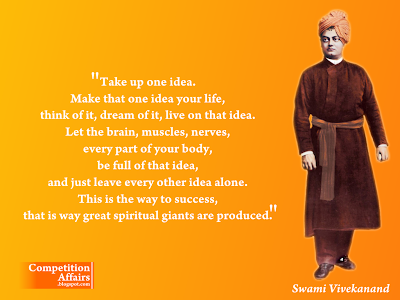Swami Vivekanand
SWAMI VIVEKANANDA'S inspiring personality was well known both in India and in America during the last decade of the nineteenth century and the first decade of the twentieth. The unknown monk of India suddenly leapt into fame at the Parliament of Religions held in Chicago in 1893, at which he represented Hinduism. His vast knowledge of Eastern and Western culture as well as his deep spiritual insight, fervid eloquence, brilliant conversation, broad human sympathy, colorful personality, and handsome figure made an irresistible appeal to the many types of Americans who came in contact with him. People who saw or heard Vivekananda even once still cherish his memory after a lapse of more than half a century.
"The valiant monk who proclaimed in America the greatness of Hinduism and of Indian culture at a time when the West regarded India as a land of barbarians. The beloved disciple of Sri Ramakrishna Paramahamsa.He was the living embodiment of sacrifice and dedicated his life to the country and yearned for the progress of the poor, the helpless and the downtrodden. He was the great thinker and mighty man of action whose ringing words galvanized the slumbering Indians. For ages to come he will be a source of inspiration."
- D.Javare Gowea















